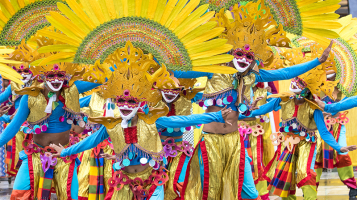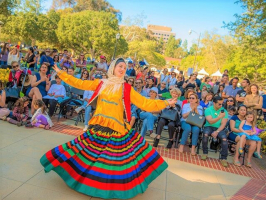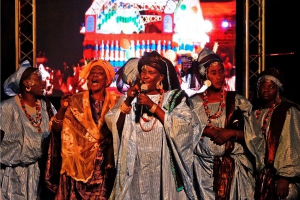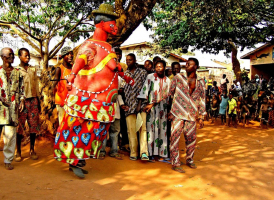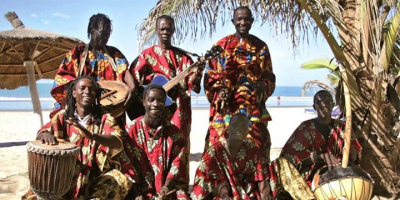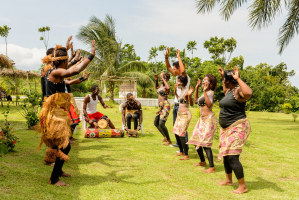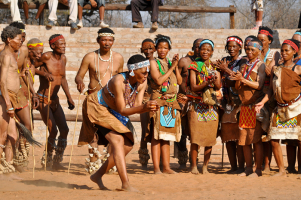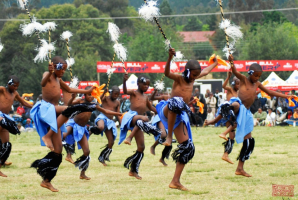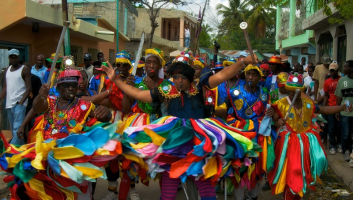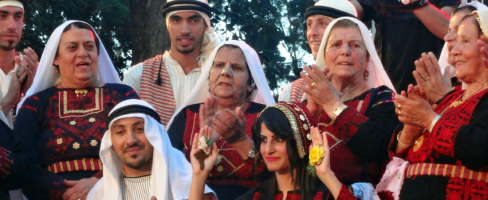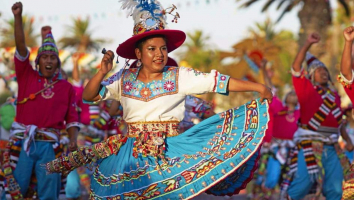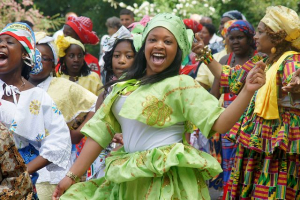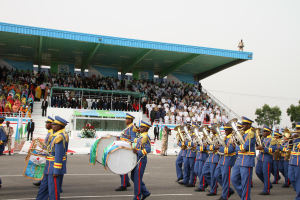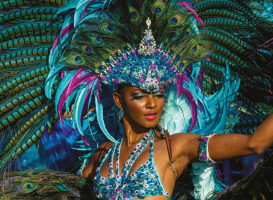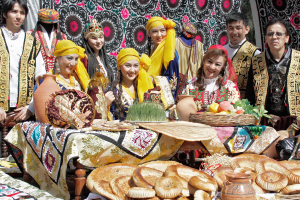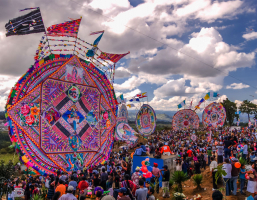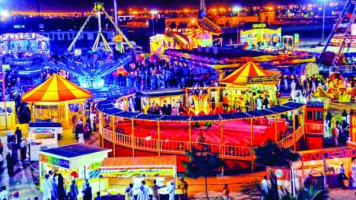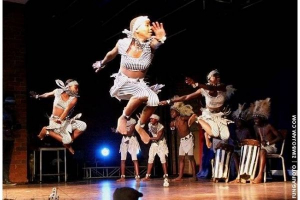Top 10 Most Famous Festivals in Finland
Finland's vibrant festival scene includes everything from multi-arts events and concerts to theater performances and film festivals. Smaller but equally ... read more...important regional cultural events coexist with internationally known, large-scale happenings. Summer is when the majority of the country's most popular festivals take place. Toplist has compiled the top 10 Most Famous Festivals in Finland.
-
The first one in the Top 10 Most Famous Festivals in Finland that Toplist would like to introduce to you is Juhannus. Juhannus is Finland's largest traditional summer celebration. Long days and the midnight sun are popular in Nordic countries, and this is the time to celebrate the longest and brightest day of the year, as well as the official start of the summer season.
Many beliefs and magical stories surround the Finnish "nightless night," as it is also known. This is the night when witches, fairies, and elves visit the human world to tease and foretell their fortunes. There are many old traditions for this holiday that are still practiced today. One example is the construction of a 'kokko,' which is a large bonfire usually located near water.
Another custom is to adorn houses and doorways with birch trees and flowers. People used to decorate their cattle for good milk production in the past. The midsummer festival used to be known as the Ukko, the God of Thunder, celebration in the country's east. He was the primary god in pagan times, as he was in charge of the rain and harvest.
Midsummer festival are now a mix of fire and water, traditional folk music and songs, dancing, and simply having fun. The majority of Finns spend these days in their summer cottages near a forest and a lake. Every city has a massive bonfire to bring people together for large celebrations. This holiday is observed annually between the 20th and 26th of June, during the year's longest day.
Joensuu and Rovaniemi are two of the best places to experience authentic Midsummer festival in Finland. Many people, however, prefer the capital city. Traditional celebrations take place away from downtown Helsinki, specifically on Seurasaari island or outside of the city in Porvoo. Meanwhile, some people choose to stay in the city center, which is less crowded than usual on these days.
Takes place: June
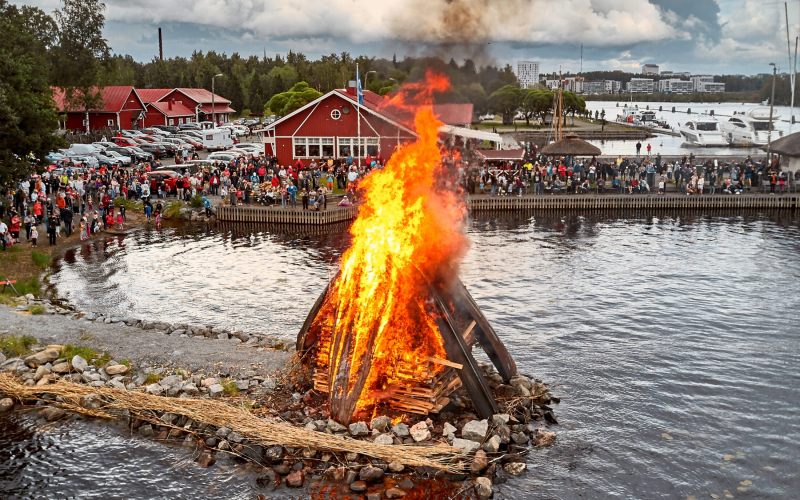
scandification.com 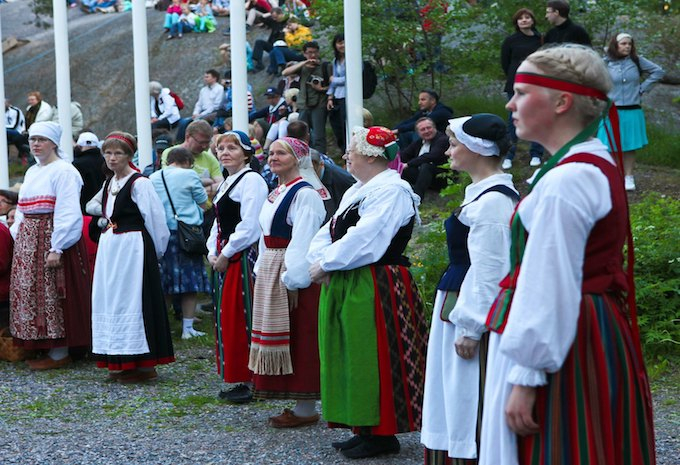
tourradar.com -
The Flow Festival (abbreviated simply as Flow) is an urban music and arts festival held in Helsinki, Finland. Flow Festival features a diverse range of artists from indie rock to soul and jazz, folk to contemporary club sounds – from both the Finnish and international scenes. Flow Festival is about urban spaces, visual arts, film screenings, talks, design, and food and drinks, in addition to music. The event takes place in the immediate vicinity of downtown Helsinki at the defunct Suvilahti power plant and its industrial surroundings.
The festival features established musical artists, but it is also known for giving new and emerging artists a platform. Flow Festival has featured notable artists such as Iggy Pop, Nick Cave & The Bad Seeds, Kanye West, Lily Allen, The Roots, The Black Keys, Beach House, Kraftwerk, Björk, M.I.A., Bon Iver, Alicia Keys, Kendrick Lamar, Public Enemy, Cat Power, The National, Outkast, Action Bronson, Manic Street Preachers, Vampire Weekend, Iron & Wine, My
The festival drew 84,000 visitors in 2018. More than 140 artists were on the bill. The Flow Festival 2020 has been canceled due to the COVID-19 pandemic. The next Flow Festival will be held from August 12 to 14, 2022.
Tuomas Kallio, a Finnish music producer, and his friends from the Helsinki-based music collective Nuspirit Helsinki founded Flow Festival. The organizers wanted to bring something new to the Finnish music and urban scene. Since 2004, the Flow Festival has been held annually in the first two weeks of August.
Flow Festival has been held in three different locations over the course of its more than ten-year history. The festival has evolved from a small soul and jazz club event to a significant Northern European music and arts festival with growing international interest.
Takes place: First half of August
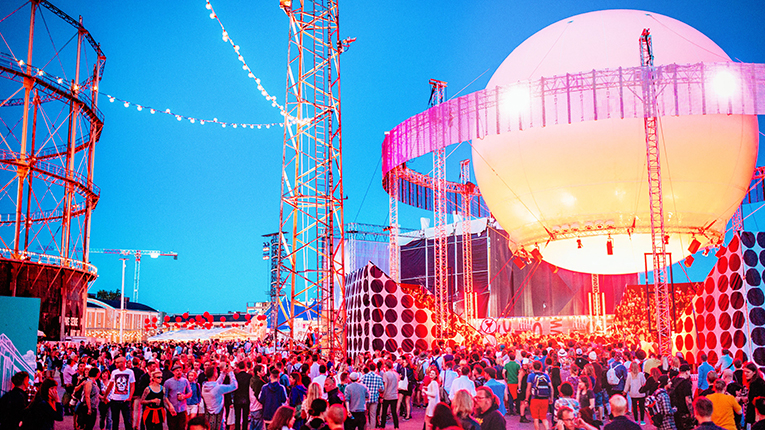
discoveringfinland.com 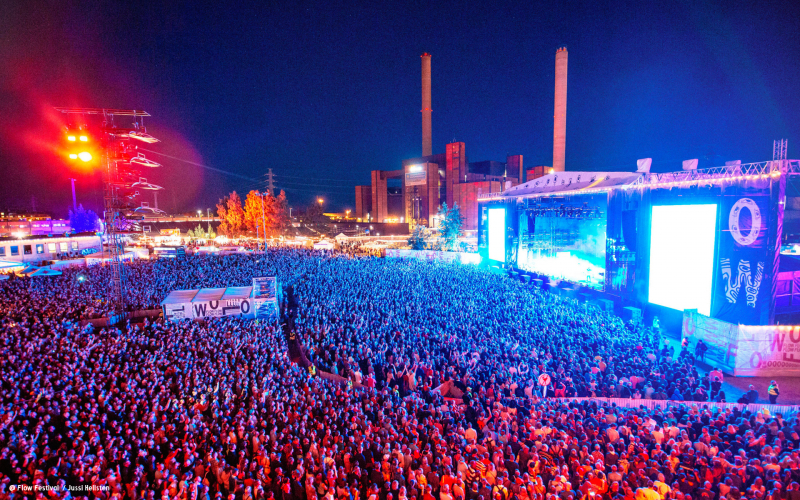
behance.net -
Another one in the Top 10 Most Famous Festivals in Finland that Toplist would like to introduce to you is the Tuska Open Air Metal Festival. Tuska Open Air Metal Festival, also known as Tuska (Finnish for "pain, agony"), is a Finnish heavy metal festival held annually in Helsinki. The first Tuska festival was held in 1998, and the festival has grown in size every year since then. Since 2001, the festival has been held in Kaisaniemi park in the heart of the city. Tuska, on the other hand, has been held at the Suvilahti event field in the Kalasatama neighbourhood of the Sörnäinen district since 2011. The festival has always taken place in June or July.
In recent years, attendance has increased, and the festival attracted 43,000 people in 2019. In 2006, the festival was nearly sold out, with 33,000 people attending over the course of three days to see 32 artists such as Anathema, Celtic Frost, Opeth, Sodom, Venom, and Finland's own Amorphis and Sonata Arctica.
Tuska had three stages: Inferno, Sue, and the main stage, Radio Rock (Radio City until 2007). Inferno, Helsinki, and Radio Rock Main Stage will be the names of these three stages in 2019.
Takes place: June, July
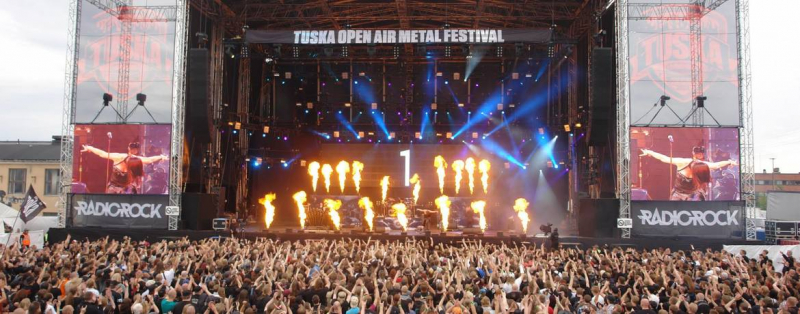
festivall-app.com 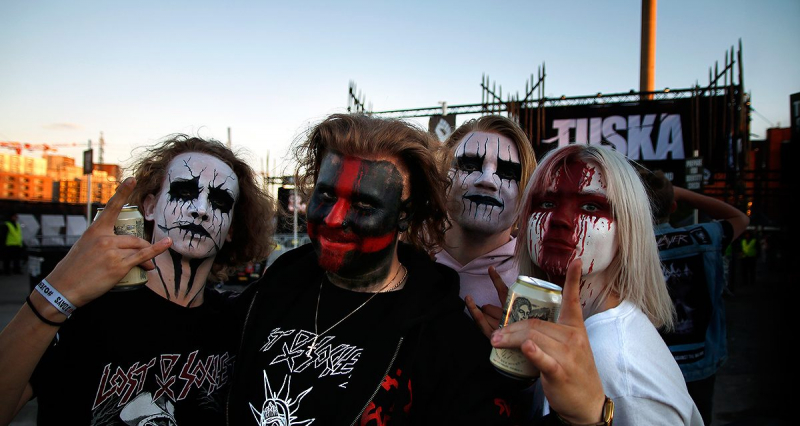
finlandtoday.fi -
The Midnight Sun Film Festival is a five-day annual film festival held in Sodankylä, Finland. The festival is usually held in the second week of June, but this year it will be held from June 14 to 18. One of the festival's distinguishing features is that films are shown nonstop around the clock while the sun shines.
The Midnight Sun Film Festival is not a competitive event. The program consists primarily of films directed by the main guests, as well as 20–30 modern films from around the world, contemporary Finnish films, and cinema classics, some of which are typically presented as "master classes" by various film theory experts. Typically, the festival introduces four to five young directors who are also festival guests. Attendance has ranged between 15,000 and 25,000 in recent years.
The first international directors to attend the festival were Samuel Fuller, Jonathan Demme, Bertrand Tavernier, and Jean-Pierre Gorin in 1986. Later, it hosted some of cinema's biggest names, including Jim Jarmusch, Krzysztof Kieślowski, Roger Corman, Terry Gilliam, Francis Ford Coppola, Abbas Kiarostami, and Milo Forman.
Takes place: the second week of June
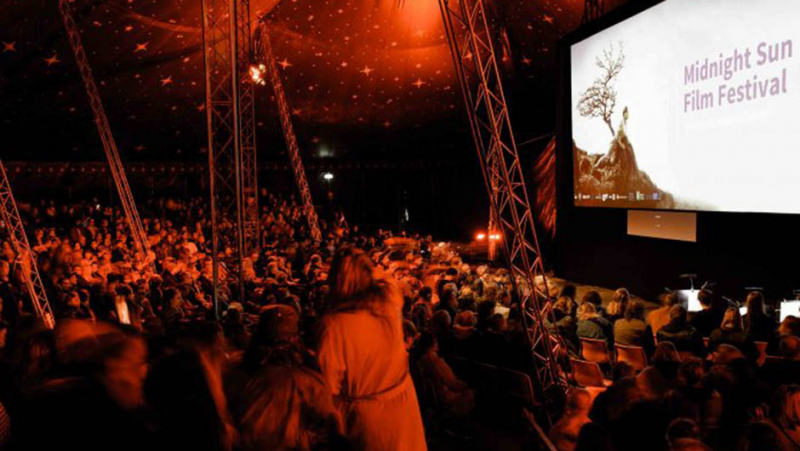
festivals.fi 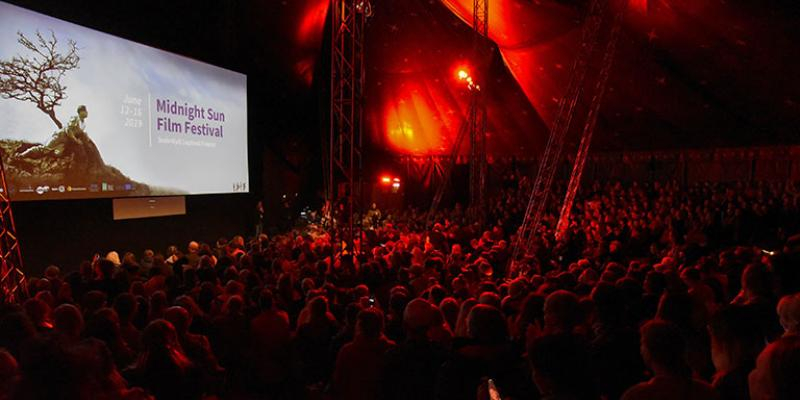
screenslate.com -
The next one in the Top 10 Most Famous Festivals in Finland that Toplist would like to introduce to you is Baltic Circle Festival. The Baltic Circle Festival is an international contemporary theatre festival that takes place in Helsinki, Finland every November, both in theatres and on various city sites. Baltic Circle is a platform for developing new trends and ideas in the context of European contemporary performing arts. Baltic Circle showcases new contemporary theatre talents while also organizing training programs, seminars, workshops, discussions, and club events.
The following are some of the festival's activities:
- Singing: previously competed at the district level and won gold medals.
- Development: The festival organizes training programs, seminars, workshops, and discussions, as well as actively participating in public debate on contemporary theater practice. The primary goal is to facilitate a dialogue between artists and audiences as part of the process of creating new work.
- New Production Models: Baltic Circle commissions and co-produces new work both locally and internationally. Baltic Circle, in collaboration with HIAP – Helsinki International Artist-in-Residence Programme – has launched the first residency project for contemporary theatre and performing arts in Finland.
- Cultural Exchange: Baltic Circle brings contemporary international performances to Finland while also highlighting new local talent.
- Discourse: Baltic Circle is a community where artists and audiences can engage in dialogue, ask questions, and gain new perspectives on the arts and the world around them.
Takes place: November
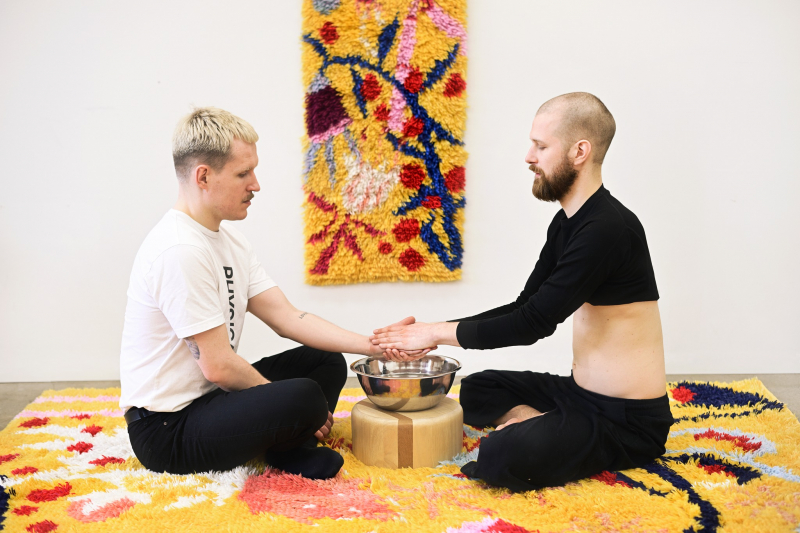
Photoo: Baltic Circle's Facebook 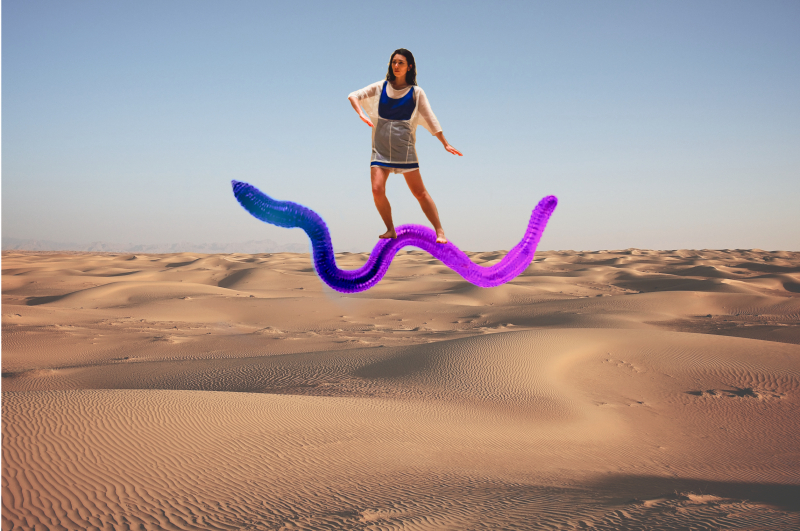
danceinfo.fi -
The Kaustinen Folk Music Festival held in July each year in Kaustinen, Finland, is the largest folk music and dance festival in the Nordic countries. It was first recognized in 1968. The festival began with the goal of showcasing the famous local fiddle-based music tradition, which has been going on for at least 250 years and is still the emotional heart of the event. The Finnish government has decided to include the Kaustinen tradition on the Unesco Representative List of Intangible Cultural Heritage in the spring of 2020.
The festival expected 6,000 visitors in its first year. However, the actual figure was more than three times higher than the estimate. Nowadays, the festival lasts a week and attracts 40,000–50,000 visitors each year. Aside from Finnish and international professional performers, the festival attracts 4,000–5,000 amateurs who form 400–500 groups each year. Every year, over 1,000 scheduled performances are given in nearly 30 venues and stages, and dozens of workshops and other participatory programs are offered.
Since 1970, the Kaustinen Folk Music Festival has named one or more people each year as Master Folk Musician, Master Folk Singer, or Master Folk Dancer, based on their repertoire, skills, and work to preserve the traditions, as well as an Ensemble of the Year. In the Finnish folk music and dance community, these nominations are highly valued. Since 2012, the festival has been organized by the Pro Kaustinen Society, which is made up of three Kaustinen tradition bearers' organizations. The Peanuts comic strip bird Woodstock, named after the New York rock music festival of the same name, is called Kaustinen in Finnish, a clear reference to this folk music festival.
Takes place: July
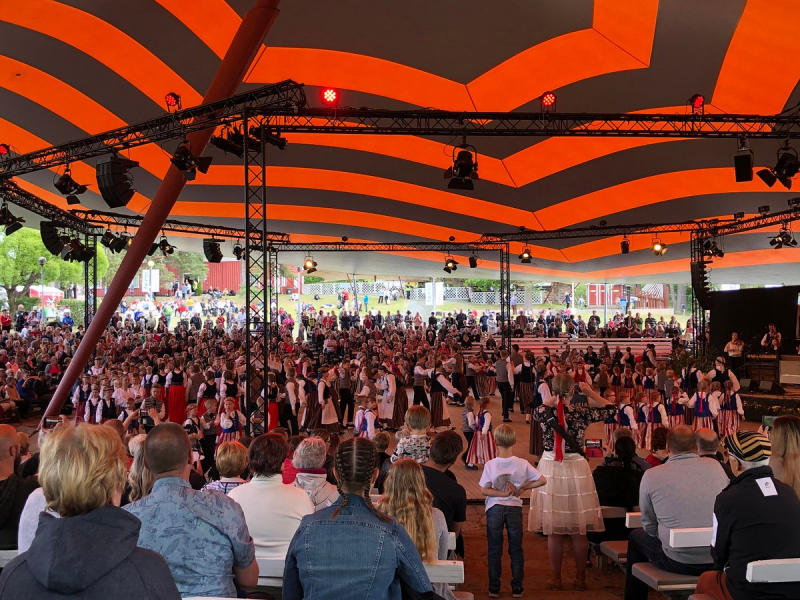
en.tripadvisor.com.hk 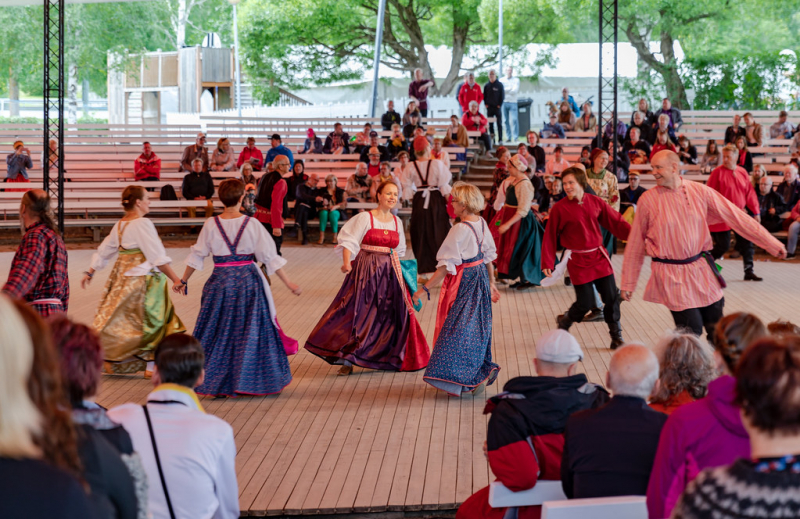
flickr.com -
The next one in the Top 10 Most Famous Festivals in Finland that Toplist would like to introduce to you is Ilosaarirock. The Ilosaarirock Festival is an annual rock festival held in Joensuu, Eastern Finland, on the second weekend of July. Ilosaarirock, founded in 1971, is the second oldest rock festival in Finland and one of the oldest in Europe. In 2007, the event drew 21,000 visitors per day. From 1998 to 2011, the festival sold out in advance every year.
Ilosaarirock is a collection of events that takes place from Friday to Sunday, with clubs and side-events thrown in for good measure. The festival itself takes place on Saturday and Sunday. The festival site, Laulurinne, hosts performances by over 50 artists on five separate stages. Ilosaarirock weekend features over 100 artists across all events.
Ilosaarirock is primarily organized by volunteers and is put together by over 1,500 volunteers. Every year, the graphic look of the Ilosaarirock festival is chosen through an open design contest. The Joensuu Pop Musicians' Association, a non-profit organization, organizes the Ilosaarirock festival. The festival's profits are used to support the North Karelian music scene, bands, and artists.
Takes place: Second full weekend of July
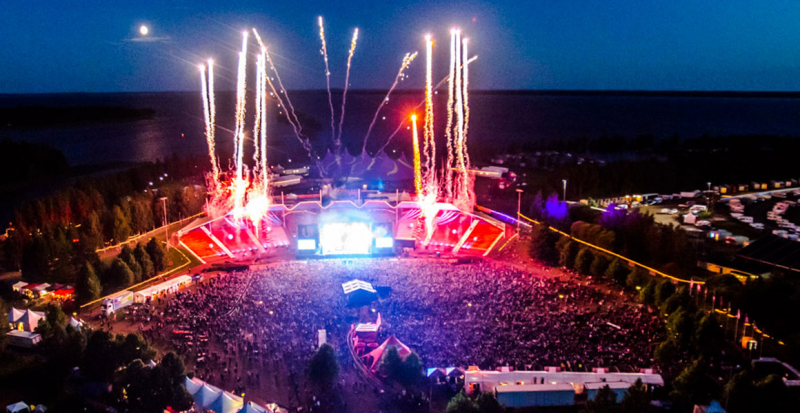
yourope.org 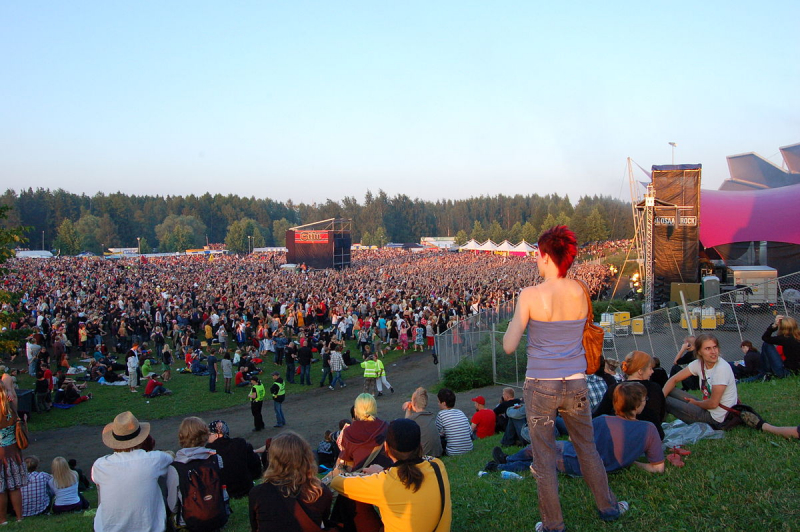
en.wikipedia.org -
Pori Jazz is a large international jazz festival held annually in July in the Finnish coastal city of Pori (population 82,809 in January 2010). It is one of Europe's oldest and most well-known jazz festivals, having been held every year since 1966.
In July 1966, 1500 people attended the first Pori Jazz Festival, which lasted two days on the island of Kirjurinluoto. Audiences grew year after year, and the festival's duration was extended. It was established as a four-day event between 1975 and 1984. Since 1985, the festival has lasted nine days and drawn crowds ranging from 50,000 to 60,000 people. In the early 1990s, the festival attracted 100,000 visitors, and in the twenty-first century, approximately 120,000–160,000 people attend each summer. Pori Jazz celebrated its 49th anniversary in 2014 and is already planning its 50th in 2015. Pori Jazz Festival is currently Finland's largest, most well-known, and most popular summer event.
The first festival focused on acoustic jazz, but it gradually expanded to include electric jazz and other rhythm music, blues, soul, funk, hip-hop, and the rich Cuban and Brazilian music. Pori Jazz now features a diverse roster of the world's leading artists, ranging from long-established figures to rising stars. Approximately 70% of the program is free to attend.
Pori Jazz has held the top spot among Finnish and international festivals for over 45 years. The festival atmosphere, in particular, created by the music, people, fine services, and one-of-a-kind setting, is second to none and highly regarded by visitors. The festival has evolved into an experience that visitors want to relive every summer. During the festival's nine days, there are over 100 concerts in 11 different venues. There is also a Pori Jazz Kids Festival for children. Pori Jazz Festival's 49th edition took place from July 12 to July 20, 2014.
Kirjurinluoto Arena, the main venue, is Finland's only open-air concert park dedicated solely to concerts and other events. The arena is 5 hectares (12 acres) in size for amphitheater-style concerts and 22 hectares (54 acres) in size for camping. In addition to the main venue, which requires a festival ticket to enter, there is a "Jazz street" in Pori's center, along the Kokemäenjoki river, which hosts smaller music events and clubs, as well as street food restaurants and bars. The outdoor music events on "Jazz Street" are free, but events held in clubs may have an admission fee.
Tori Amos, Kylie Minogue, Art Blakey, James Brown, Phil Collins, Chick Corea, Miles Davis, Alicia Keys, Paul Simon, Jamiroquai, Macy Gray, Mary J. Blige, Erykah Badu, Paul Anka, Kanye West, Sting, and other world-famous musicians have performed at the festival over the years, as have lesser-known groups from Finland and elsewhere. Pori Jazz covers a wide range of musical genres, including jazz, blues, soul, funk, hip hop, Afro-Cuban, world music, and even some pop music.
Takes place: mid-July
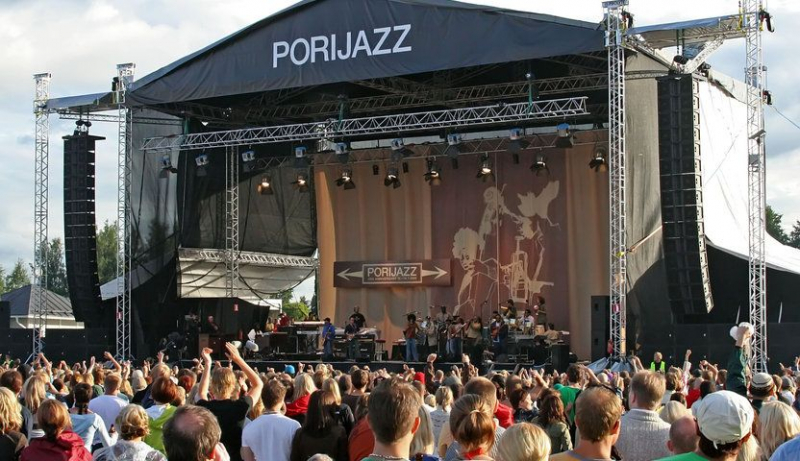
pinterest.com 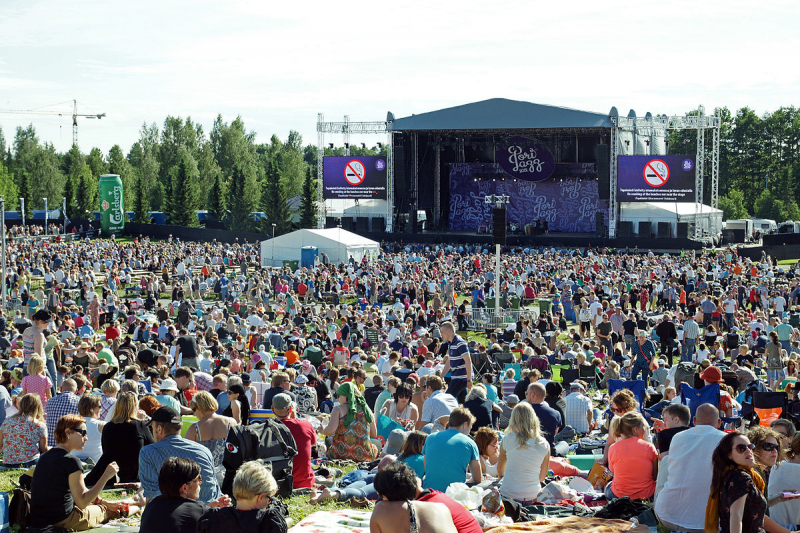
en.wikipedia.org -
Tangomarkkinat is the oldest tango festival in the world. Every year in early July, it is held in Seinäjoki, Finland. The festival includes public dancing to live music provided by the best Finnish entertainers, as well as competitions to find the country's best tango singers, composers, and dancers. The music for public dancing is not limited to tango; it includes all of the popular dance rhythms in Finland; however, the tango content must be at least 40% according to the rules.
The festival got its start in a Finnish sauna. The director of the Ilmajoki Music Festival, Lasse Lintala, and his wife were in the sauna with Tauno Äijälä, the director of the MTV3 TV channel, and his wife Katja. Lintala hoped to have the festival broadcast on television. Äijälä proposed incorporating tango into the festival, as well as possibly creating a musical based on tango singer Olavi Virta. The concept was worked on for a few years, but Ilmajoki was uninterested. Lintala traveled to Helsinki to deliver the bad news to Äijälä. On the train, he met Matti Nuolivirta, Mayor of Seinäjoki, and his deputy Risto Hakala, both of whom were eager for the festival to be held in Seinäjoki.
The Tango Music Advancement Association was founded in January 1985 after the Seinäjoki City Council approved the venture. Seinäjoki city council, the Maila-Jussit pesäpallo team, and the Marit and Mikot choir all supported the project.
In July 1985, approximately 18,000 people participated in the first Tangomarkkinat, and over 112 million people watched the TV broadcast. The city of Seinäjoki invested 60,000 marks. The Tangomarkkinat was plagued by bad weather for the first three years of its existence, and in 1988 it lost 100,000 marks, exacerbated by the failure of the Olavi Virta musical, which premiered that year. In 1989, a combination of perfect weather and the enormously popular new Tango Queen Arja Koriseva resurrected the event. The most profitable year was 1999, with a record attendance of 130,600 people and a profit of 805,000 marks. President Tarja Halonen attended the 20th Tangomarkkinat in 2004, when 34 Tango Royals from the past and present gathered for a special radio concert.
Takes place: July
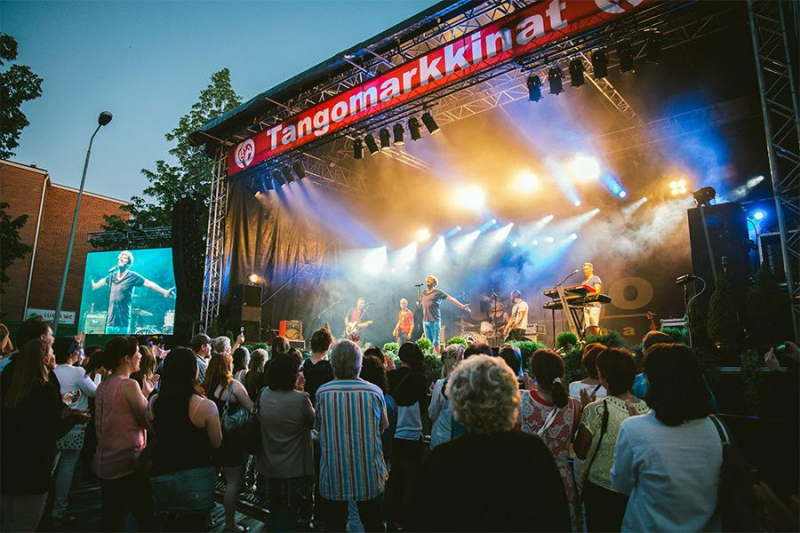
visitseinajoki.fi Video: EvaFotOvi's Youtube Channel -
Helsinki Pride is a gay and lesbian pride event held in Helsinki, Finland. The festival takes place in the last week of June. The event usually takes place the week after midsummer and lasts all week. The program begins on Monday, and there are usually sporting events, a gathering of young people in the evening, and a rainbow fair during the week. Furthermore, a number of them honor the role of women. The week culminates with Saturday's Pride parade through the heart of Helsinki. The procession concludes in the park, where the festivities continue. There is usually a celebratory program of music and speeches in the park. On Saturday nights, the city's gay nightclubs provide entertainment.
Attendance nearly tripled from 2017 to a record-breaking 100,000 people in 2018, making it one of Finland's largest public events ever.
Seta's "Freedom Day" in 1975 started the tradition of Helsinki Pride. Previously, the Pride was held in Helsinki on even years (2004, 2006, etc.) and in one of Finland's other major cities on odd years (2003, 2005, etc.). Every year since 2006, Helsinki has hosted the LGBT pride parade. Other major Finnish cities have also organized their own prides, such as Tampere Pride, North Pride in Oulu, and Lahti Pride.
In 2010, a tear gas attack on the corner of Aleksanterinkatu and Kluuvikatu disrupted the parade, injuring several people, the youngest of whom was less than a year old. Three men were later apprehended by police.
Takes place: the last week of June
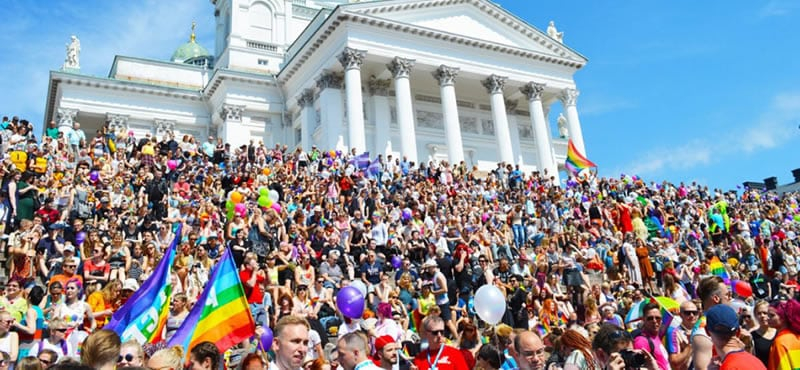
gaytravel4u.com 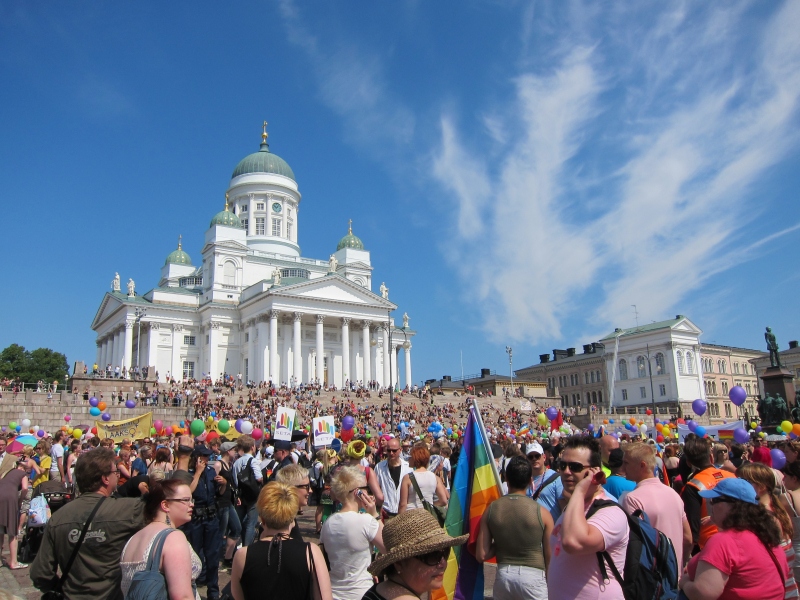
vi.m.wikipedia.org












